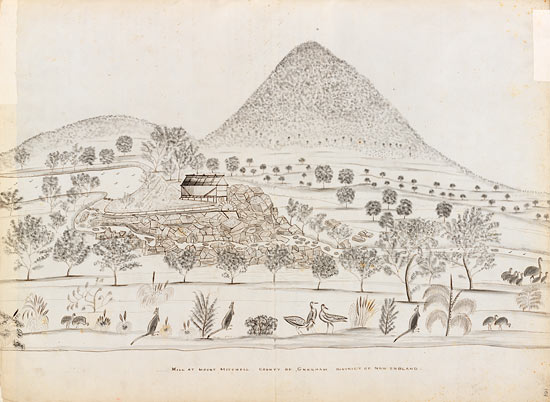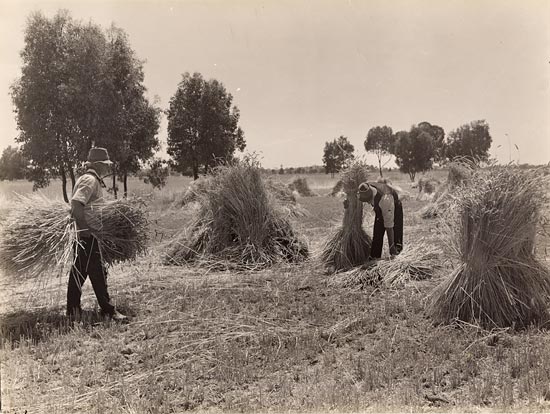Australian wheat
The first crop of Australian wheat was sown at the Botanic Gardens in Sydney shortly after the arrival of the colonists in January 1788. The First Fleet had brought several types of grain with them, not knowing what might grow successfully in the new country, and the Gardens were set up to farm these grains experimentally. The first harvests were disappointing. The harsh climate, poor soils and the lack of farming knowledge shown by the convicts meant that the young colony almost starved in the first few years. As early as May 1788, Governor Phillip was sending disheartening reports back to England:
“The great labour in clearing the ground will not permit more than eight acres to be sown this year with wheat and barley. At the same time the immense number of ants and field-mice will render our crops very uncertain.” 15 May 1788. (H.R.A. I, 1, pp. 19-23.)
James Ruse, a First Fleet convict, was considered the father of the Australian wheat industry. He was an experienced farmer and when his sentence expired he requested a land grant at Rose Hill near Parramatta. When his wheat crop was successful, Governor Phillip rewarded him with a 30 acre land grant which Ruse named Experiment Farm.
> Find out more about early farming and our first farms
From these early beginnings, wheat became Australia’s most important crop. The mid-19th century saw a huge increase in the area of land under cultivation – new colonies opened up (Victoria, South Australia and Western Australia were particularly important in terms of wheat production), and the gold rushes in New South Wales and Victoria encouraged inland settlement and the creation of efficient transportation systems, including road, rail and river.
Australian wheat exports began in 1845, but were not regular until the 1870s. New land clearing methods allowed large tracts of land to be cleared more efficiently – this included the invention of the iconic ‘stump jump’ plough.

Mill at Mount Mitchell, County of Gresham, District of New England from Volume 01: Production and resources of the northern and western districts of New South Wales, 1854 [ca. 1850-1857] by William Gardner
Manuscript A 176 vol 1
With the success of the wheat harvests, flour mills began to spring up around the country. By the 1870s, many large country towns had their own mills, with around 500 mills producing flour across the country. Flour exports were an important part of the wheat industry until around the 1930s. After the Second World War, many of Australia’s export partners (which were mainly in the developing nations of Asia) began setting up their own flour industries and the Australian product was no longer in demand.
> Explore a beautiful collection of flour bag labels from the Library's ephemera collection
By the early 20th century, experimentation by William Farrer with new varieties of wheat had resulted in hardier, pest and rust resistant crops. This, and increasing farm mechanization in the years following the Second World War, led to wheat becoming Australia’s single most valuable agricultural product. The establishment of the Australian Wheat Board in 1939 also helped to boost the industry during a drop in prices in the 1930s. The AWB is still the sole bulk exporter of Australian wheat. This ‘single desk’ system is designed to ensure that Australian wheat producers receive consistent returns on their product.
Wheat now generates around 4 billion dollars in export revenue annually and is a major source of Australian agricultural employment.

Stooking wheat, Rutherglen Experiment Farm, Vic. from Series 03: Harvesting ca. 1921-1924 Photographs collected by Rev. James Colwell portraying rural and agricultural scenes and activities
Photographs PXB 310 / 71
